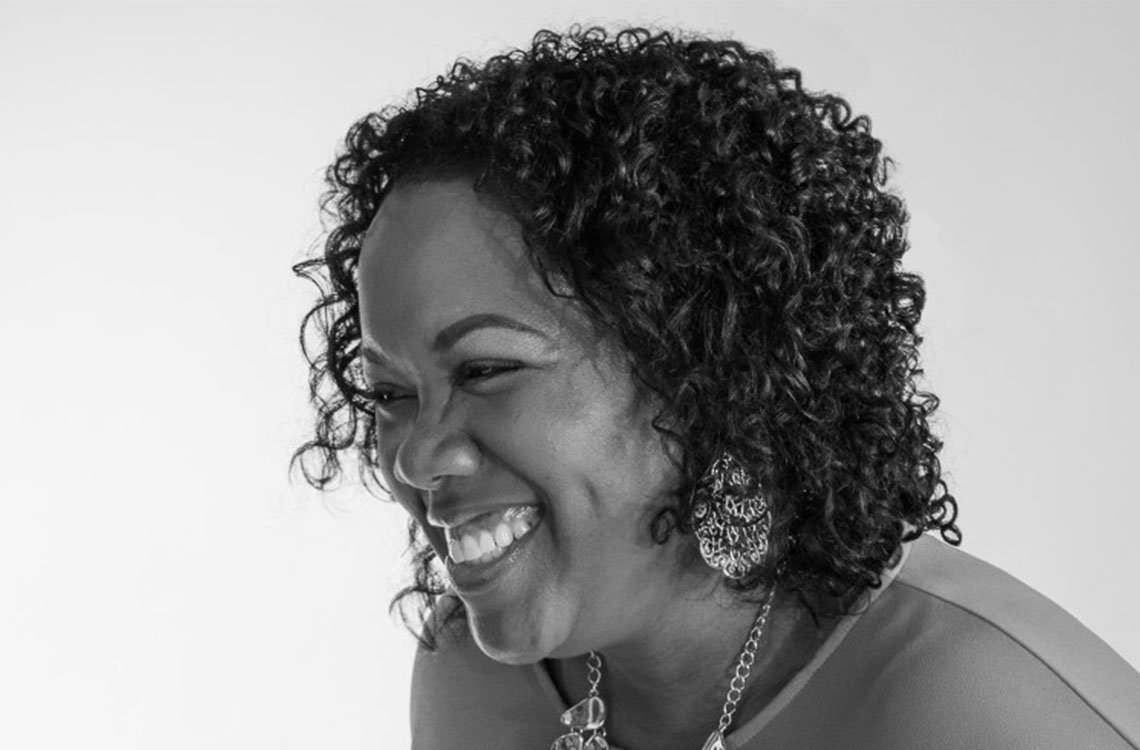Making A Point Through Positive Confrontations With Michele Stewart
No team is exempted from disagreements, challenges, and roadblocks. But if a leader knows how to handle such problems through positive confrontations, they can yield good outcomes instead. Joining the People Strategy Forum community is HR Consultant and Certified Life Coach, Michele Stewart. She explains how to inspire team members to open up in the face of adversities. Michele discusses the importance of being an authentic leader to heal wounds between employees, offer personal yet constructive feedback, and provide genuine support to those who need it. She also explains how to lay-off people and inspire others to step up their game through positive reinforcements.
—
Making A Point Through Positive Confrontations With Michele Stewart
For those of us that are returning, welcome back. We’re happy that you’re here with us for another episode but if this is your first time here, don’t worry. I will explain everything that goes on here so that you’re familiar with and comfortable. In this episode, we are going to be covering the topic of coaching with positive confrontations with Michele Stewart.
Our goal for this show is to engage, energize and elevate your employees and also your company. The way that we do that is to show up every week. We have an awesome panel of hosts who have expertise in many areas. We discuss different topics each and every week. You are sure to come away with something awesome and valuable and for free that’s the best price. We also archive everything on the YouTube channel as well so you can check out and catch up on everything. Also, I encourage you to take notes.
I’m going to introduce everyone else that we have here. We’re missing a couple of people but that’s all right. We still have a nice full panel. We have Howard who works with CompTeam. He’s a Compensation Advisor and has years of experience. He knows exactly how to leverage technology and software to help organizations improve their compensation programs.
We also have Sumit who is a people strategist and consultant. He’s helped many organizations implement new and modern HR practices. We also have Sam. Sam is the leader over at CompTeam. He is the Founder and CEO. He is a Certified Compensation Consultant. All things compensation and talent initiatives, he knows about. He also is the person who brings the forum together every week as well.
That brings me to our special guest speaker, Michele Stewart. We’re very excited to have her here. She has years of experience. She started working in human resources. She’s an HR consultant but also a certified life coach. She is also the Founder of Indala Consulting. I was like, “That’s an interesting word.” We found out because it’s a combination of her two children’s names, India and Elijah. That’s where that name comes from which is very cool.
She runs Indala Consulting and does one-on-one coaching. She helps about anybody that needs help. She helps college students, executives or anyone that wants to figure out what’s stopping them from reaching their goals. Michele, welcome. Thank you so much for being here. We’re glad you could make some time for us.
Thank you for having me, Jules. I’m excited to be here.
Michele, tell us a little bit about how you started. What gave you passion in this area to help people?
The passion came through the work that I’ve been doing for several years in human resources. I always tell people human resource is a field I love and it’s my second career and my final career. I’ve been passionate about helping people achieve their goals for a long time. As I was saying, being able to help people through my work has trickled over into what is Indala Consulting.
My goal is to empower people and give them the tools that they need to feel that they’re successful. It is important for people to create their definitions of what success is because there are so many things out there. To some people, it’s the cars, the money, the house and all of those things but it goes deeper than that. I’m here to help people discover what their goals are and what they want to achieve. I want to help them get there and be successful in achieving that.
I imagine a lot of times in your consulting practice you talk to individuals that are focused on one thing. I imagine what’s important to them may be something else and they don’t even realize it so you help them come to that fruition.
That usually comes through conversation. I usually start with my clients with a 15 to 20-minute consultation by asking them a series of questions. By the end of that consultation, what they said they wanted is very different than what they wanted to work on as far as entering into a coach-coachee relationship with me. That comes through questioning to help them figure out what that is that they want to achieve and what they need my support and my help with.
Learning to ask the right questions is quite a skillset. You’ve got a lot of experience from your past HR experience and employee relations. Is that right?
It is. Asking the right questions will give you the information you need. My first career was as a journalist. I was a reporter. I took the skillset that I learned from that and transferred those skills over into HR. That has been able to continually build upon that as I have moved throughout my career from being a recruiter and also moving into employee relations. It’s been very beneficial.
I’d love to hear a little bit more about that process. A lot of times when we meet new people, it’s very difficult to get them to open up and speak their minds. There’s trust that needs to happen. Talking about confrontation, when you’re talking to people, especially when they’ve come from a period of disagreement with a colleague or manager, they seem to get narrowed focus. Sometimes we lose that higher level of thinking. How do you break through with these people to have them understand the big picture and feel like they can reach out and talk to you candidly?
You have to be authentic in whatever you’re doing. Not just for me as a coach but as leaders to employees. When you’re not authentic, people can see that. They know that you’re not authentic. They’re not going to open up to you and share their innermost dreams, struggles and challenges. Pouring those things out to somebody that you met or don’t have a connection with is difficult. To be able to break through that and get somebody to open up to you, share those things and get to that next level so you can work with them and make some progress, you have to be authentic. Anything else won’t work.
There seems to be so much fear among employees. People are suffering layoffs and so forth. Opening up and being real in a situation where you’re worried about any vulnerability that you might display account against you in the future. Creating that safe place to talk and be authentic is a great way but what are some other ways that we can encourage people to open up?
You made a good point. People can be afraid to be themselves. It can be difficult to find that safe place to open up, especially with all of the things that are going on in the workplace with the layoffs. You do yourself a disservice when you’re not open and honest for one. Secondly, if you are a leader and have people who report to you, who don’t feel like they can be 100% themselves and be safe with you, that’s a breakdown.
It doesn’t foster that respect and trust that you need to be able to have those connections, which will lead to those coaching conversations or confrontations that you have to have at some point. As a leader, you have to be able to foster that with your employee to get there. Those are the things that you have to keep in mind. You have to do that.
Sumit, you’ve been closely monitoring the market and seeing what leaders are doing as far as having critical conversations. How are a lot of leaders getting this wrong?
One of the ways that they’re getting it wrong is that they’re not doing it. I’ve been doing this for many years. I have so many leaders who come to me and refuse to have these difficult conversations with their employees for fear that they’re not going to know what to say or are not sure how the person will react. It’s like anything else, you have to do it. If you want to be good at something, you have to do it and practice it. I like to give my leaders tools to help them get through and be able to have those tough conversations.
One of the things that I always tell them is, “The first thing you have to do is start with the heart. That can sound a little sappy to some people but you have to begin with the end in mind. What is it that you want to achieve? What is your end goal here when you have this conversation with the employee? Is it that you want them to start coming in on time? Is it that you need them to deliver reports to you on the deadline that’s given to them each month? Start with what the end goal is and you have to focus on what the result is.”
Leaders must start with the heart and end in the mind when getting through tough conversations. Share on XThe next thing is that people will tend to back down because they are afraid of how the person is going to react. The best way to counter that is when you’re having that tough conversation and started with that employee, going in you’re being authentic for you to state what your intentions are upfront. There is nothing worse than for a leader to bring an employee in and sit there and ramble for about ten minutes because they’re nervous chitter chatter.
The employee is sitting there wondering, “Why am I here? What is going on?” You need to go in and state what your intentions are upfront so that employees can at least have an idea of what the meeting is about and then tell them what it is, move through the conversation and then start to make it personal. Those are two of the tools that I have but I want to see if you have further questions about stating your intentions upfront.
I have a question. Maybe it’s incorrect but sometimes you want to do it on an informal basis like you’ll grab someone and say, “Let’s grab coffee or lunch together,” and have that discussion. Would you say that’s not the ideal approach?
I would say that is an ideal approach. It breaks down the confrontation. It makes it easier. I was telling Sam that people tend to view confrontation as negative. It’s all in the way you present it. A confrontation doesn’t have to be negative. The start of it not being negative is doing exactly what you said, Howard, inviting them. “Meet me in the cafeteria. Let’s walk down. Let’s have a coffee,” that breaks down or disarms the employee. It helps them be more receptive to what it is you’re saying because there’s a difference between, “Let’s walk down and get a coffee together,” and, “I need you in my office in five minutes.” The response is different. I like the disarming approach that you suggested. It’s perfect.

Positive Confrontations: A confrontation doesn’t have to be negative. Disarm an employee from a tough conversation by inviting them for a cup of coffee.
I find if leaders have easy conversations on a more regular basis, the difficult ones become much easier because suddenly people’s defenses don’t go up when a leader says, “Let’s chat,” even if it’s over coffee. You’ve been here for a few years and they’ve never had coffee with you. You hear of layoffs all around, complete destruction and mayhem and you want to talk to me. Something is not right.
If you create that culture of open dialogue regularly, you wouldn’t have that problem from what I see. It’s a big challenge in my part of the world where feedback is still largely related to a post-mortem analysis of what went wrong. When somebody says, “I’ve got some feedback for you,” it doesn’t mean dialogue, it means criticism.
Your comment, Sumit, brings me to one of the things that I was going to mention later down the line. When you’re having those tough conversations or simply giving feedback to an employee, the first time this employee hears about this feedback should not be when you sit down to have their annual review with them. You should be having conversations with your people throughout the year. If the first time I hear that I’m not meeting expectations is during my annual evaluation, you as the leader have failed me. You have to actively and continuously engage with your employees.
The next step that I tell my leaders to go into is to make it personal without making it personal. When you do that, you’re focusing strictly on the performance, the behavior or the issue. You’re not making it personal and not talking about them as a person. You are focusing on the behavior. The behavior, for example, when you are late with those reports, I’m not able to get those to them in time and it delays the meeting. When you don’t show up on time, this is what happens, the because and the effect. It is focusing on the behavior, specifically on what the fallout from that behavior is.
Leaders must make employee feedback personal without making it personal. Focus strictly on performance or behavior and do not talk about them as a person. Share on XI was reading an interesting line that made a lot of sense to me, which was, “Say what you mean, don’t say it mean.”
One of the things that are going on is we heard this expressed as quiet quitting. We’re finding that we’re in a period of a lot of employees are experiencing disengagement. You were talking about not showing up to work on time or maybe not having quality standards up. There are a lot of things that are going on like that in multiple industries. Have you heard or experienced that with your clients?
With my clients, no. I have read a lot about quiet quitting and I know what you’re talking about. Thus, far I haven’t had any of them come to me with anything like that. It usually involves a conflict that they’re having with their bosses or other coworkers.
One of the things that I’ve been hearing is some of the disengagement that some leaders are experiencing. What I often say is that it’s important to reiterate the vision of the organization. Many times, leaders are expecting people to perform at certain levels and some of those people are not experiencing or don’t understand what happens if they do a poor job like you were talking about, the consequences of it.
If a company comes out and they’re saying, “This is our overall vision of what we’re trying to achieve for our customers and the society as a whole,” as they start developing a relationship with that vision overall, if it’s meaningful to them, it naturally becomes more engaging. When you’re talking to your leaders or expressing the importance of stating the mission and vision of your organization and how that drives behavior, do you find a close connection? Does that work for your people?
It’s important always to go back to the mission and the vision of the organization as that’s what drives everything. Sometimes it’s important that leaders understand that not everybody they have reporting to them is going to buy into the mission and the vision of the organization. That’s when you have to start to assess whether or not that person is a fit and whether we should retain that person. Unfortunately, that’s what happens in business but you always have to make sure that they are in line with the mission of the organization because not everybody is always a fit.

Positive Confrontations: Leaders must understand that not everybody who reports to them will buy into the organization’s vision and mission. Everyone must be assessed whether a person should be retained or not.
Sometimes I find that these things change over time. For instance, we experienced this during the pandemic when we were used to meeting with people face-to-face and then when we shift to a remote environment, some people felt disconnected and that was not what they wanted out of their job. They wanted that personal interaction. The objectives changed there. I understand that there are times when people become disengaged because this is no longer the job that they signed up for. What is the responsibility of leaders to help them take that conscientious next step to find something that is a right fit?
Sometimes you have to have those difficult conversations. You have to pull the employee in and find out what it is they need and how you can support them. One of the questions that I always encourage leaders to ask their employees is, “How can I best support you?” Find out what it is they need. That transition from working in the office to working at home was a struggle for a lot of people, myself included. I’m a very personable person. I like FaceTime and connecting with people. Making that transition can be a struggle.
That goes back to that connection I was talking about. Check-in with your people, see what it is you can do to support them and get them the help they need, utilizing the resources that are available in the company. Sometimes the EAP or Employee Assistance Program is underutilized. People need to remember that it’s a resource that they can point their employees to. I refer people to the Employee Assistance Program all of the time because there’s a myriad of issues that they are able to help and support with.
Being in the field sometimes people will bring things to me that are more suited for a counselor or a therapist. I have to remind them that that’s not what I do but I can direct them to somebody who can help them. You don’t always have to have all of the answers but you can seek out the resources available to help support them and ask those questions to point them in the direction that they need to be in.
Leaders don’t always need to have all the answers. Seek out resources to support them and point them to the right direction. Share on XMental health has been such a big issue with organizations and EAP programs as they’re called in the United States are very important in helping people get back on track. It’s been an underutilized benefit for a long time. Sumit, in the periods you’ve experienced, we’re in a phase where sometimes people are not going to get up back on track because there has been a shift and we need to ask them to leave the organization. What is your recommendation about making sure that’s more of a positive experience and leaders can do that correctly? What do you think there?
Are you talking about getting people to leave the organization on a positive note?
Yes. There are lots of layoffs that are going on and people are seeing this done through Zoom meetings, chat, email and so forth which is a very negative experience overall. There’s a way that we can do this positively and a way that we’re humanizing that person and appreciating what they’ve done for us in the past. Also, setting them up for success in the next role that’s right for them. What do you think?
Before layoffs became such a common occurrence and a daily used word, several years ago, there were companies in the tech space that conducted layoffs without placement support. This is when they cared enough about the employer brand when saying we laid people off wasn’t disguised under a lot of strategy talk and strategic restructuring of the operating paradigm and fancy complicated language like that.
Over time, as technologies become more frequent and as layoffs have become a more popular phenomenon, the humane conversation has gone away. I remember years ago, I was barely out of college and I had to lay people off. Some of them were almost a generation older than I was and some of them had tough financial circumstances.
The first time, I couldn’t do it. I ran crying from the room where I was supposed to do this. He handled the conversation then but he ripped into me later saying, “This is not about you. This is about them. You cannot deny people the right to hear it from the person who was the most closely responsible for their performance, which is you. You’ve failed. Next time, let’s hope this scenario never arises but if it does, I would expect you to step up and take responsibility.”
I’ve held onto that belief. No matter how much technology you have access to and what industry you’re from, it’s very easy to have compensation. I did a back-of-the-envelope calculation based on the hiring numbers at any of the large tech firms. They hire about 20,000 people a year and they’ve been doing that for a couple of years. As per my calculations, it translates to an average of 400 to 500 interviews a day, assuming you’re interviewing multiple people for the same role.
If you’re doing 500 interviews a day, you are having that many conversations. Even if you’re laying 10,000 people off, you can always face that out and have those conversations. Hiding behind the excuse of saying, “It’s impossible to talk to so many people at once,” that’s plain wrong. Companies with site data security fear and say, “We are afraid that somebody will because harm to the organization if we don’t take away access.” You’re a tech firm so after all, you can take away access during the conversation also. While somebody’s chatting with those people, you can revoke their access to organizational systems. It’s more about intent than about systems.
It’s trust. If we feel like somebody’s going to do harm to the organization after having a difficult conversation with them, it’s already gone too far. They’ve lost face with that employee. Things have gone too far. That’s a good point. Michele, as part of that, when we’re thinking about maybe saying goodbye to somebody, with layoffs, people have to meet a number. Some of those people that they’re letting go are not all bad performers. Some of those have been dedicated employees in the past and they hate to see them go. As a matter of fact, they would love to see them come back someday.
In having this very difficult conversation with the people that may be left where you have to say goodbye to them, how can you do that in a positive way to that they understand the situation? They feel like, “The door is still open. When the company starts doing better, perhaps I can come back.” How do you make it a positive experience?
That experience in itself is a tough one. I always say the true measure of an organization is how they bring someone into the organization and how they separate from somebody. There is a respectful way to do it. It’s as simple as remembering how would you like to be treated. If this was the situation that you ran into, how would you like someone to treat you? It has to be done with dignity and respect. It’s very important to keep the lines of communication open. The more information you can share, the better.
The true measure of an organization is how they bring someone into the team and how they separate with somebody. Share on XAnytime employees feel like something is being done in secrecy or they’re not being told what’s going on, that’s going to cause a lot of haste. Those are the things you want to avoid. It’s best to be open and honest. In a situation like that, I don’t think there’s such a thing as overcommunicating. You need to be very transparent and open with employees about what’s going on. You need to be respectful as they part ways and go.
Any support that you may be able to offer them in the way of referring them to other people that you may know in the industry, providing them with leads or something as simple as allowing them to take the day off if you know that the layoffs are coming and it’s going to be communicated out. It’s giving people that time to process all of that. Also, allowing them time to seek employment somewhere else if they need a day off.
Let them feel comfortable being open saying, “I understand that my job is ending on this date but I have an interview coming up next week. Are you okay with me taking off for that?” Allowing them and not making them feel bad about it at all and continuing to support their livelihood and take care of themselves. Refer them to the EAP if needed.
This is where managers must take ownership and responsibility but can’t be like, “This wasn’t my decision. If it was my call, you’d still be here.” That’s the worst thing you can do. Even if you don’t agree with it, you’re part of a larger company. You need to be open and honest and explain the situation to the employee. You got to remember they’re people with lives and families.
I agree with you wholeheartedly about being open and honest and not putting it off on somebody else. It’s owning the message and the delivery and not saying, “I’m doing this because HR said so.” That, “HR said,” doesn’t apply to layoffs. That’s across the board. That’s something that I always see from leaders instead of delivering the message from them as the leader, it’s HR said. You shouldn’t be delivering a message like that. As the leader, you represent HR.

Positive Confrontations: Do not put off your feedback onto somebody else. Own your message and delivery as a leader instead of simply passing the responsibility to the HR.
The other challenge that I find when we have conversations like this, especially the layoff context, is if you are saying, “HR, finance or some other department is responsible. If it were up to me, I’d still have you here.” You are sending the wrong message to people who are still part of the organization because they believe that you don’t call the shots. “This person has no control over my future. Why am I burning the midnight oil working for them? I might as well work for HR or start talking to whoever is in control.”
Another thing where leaders fail with layoffs is we don’t realize the amount of power and opportunity that each one of us has as individuals. Often when we go into the layoff situation, we’re thinking, “I got to meet this number. The ship is sinking. We got to bail out the water to stay afloat.” Companies are thinking that way. If there’s a layoff that’s being done, it’s a very negative experience for your people and a very poor experience to communicate to your candidates out there. Nobody wants to work at a place where they have to worry about their job or getting cut in the future. When we think about our resources as leaders, we should think about creating that positive experience by giving opportunities.
As businesses, we have partners. We have those that we do business with elsewhere that are supplying processes to us, products, vendors or customers whom we’re giving resources. That’s a huge network of companies out there that can help our people that we’re offboarding, whether we know the jobs that we’re getting rid of or which one of those people that we would like to recommend to our partner organization. Leaders should be taking the extra effort of thinking about where would these people be a good fit at other places that are not going through layoffs that are looking for this talent and reaching out to their partner network.
It all again goes back to the messaging and the transparency because, without those, it won’t come across as caring. It’s important that employers show that they care about people. I don’t think that that’s prevalent enough. We’re slowly starting to move into a time when it’s more acceptable to care about employees and care about them as people and not numbers.
We’ve taken a little bit of departure from our main topic as layoffs are something that’s happening. It’s creating a lot of difficult conversations between leaders and their employees but I want to make sure that we go back to the topic of how to heal the wounds between people and show them that the organization does care and wants this to be a positive experience. I know you had some points there. What is the next thing that we should be thinking about?
When I was talking about focusing strictly on the behavior and the performance and not making it personal about the person, you also need to make sure you’re prepared with specific examples. Employees are going to ask that and you should be able to provide them with that. “If you are telling me that I’m not meeting an expectation, give me an example of when I didn’t meet it. Talk to me about what the deadline and the date were.” Have all those things in line and prepared to share with the employee.

Positive Confrontations: When giving employee feedback, prepare specific examples. They need to know which expectations they need to meet.
Once you have that, you want to invite the employee into the conversation, which will make it less confrontational. After you’ve laid out what the struggle is, what the challenge is, what the issue is and what you need from the employee and laid out that expectation. “Tell me how you see things,” or saying something as simple as, “What are your thoughts on the matter?”
You’re inviting them and engaging them as part of the conversation, which is also disarming for the employee. It breaks down that wall and it makes them feel like, “This person cares about what I think and is not here to ream me on what I’ve been doing wrong. You want to ask those questions that invite them in and make them feel like, “I’m heard here. This person hears me. This person cares about me.” This is also another opportunity to ask them, “Is there something personal going on?”
Whenever leaders come and talk to me about challenges that they’re having with employees, one of the first questions that I always ask is, “Tell me what’s been going on with this person on a personal level outside of work,” if they know. Sometimes employees don’t share but sometimes they do. That’s one of the first questions. Often, I’ll hear, “The last time I asked this question, they said that they split from their spouse and haven’t been the same since.” That explains part of what’s going on.
That’s not to say that we use those as excuses for them not to meet performance standards but it gives us some insight into what’s going on and what their struggles are. We can help them work through not only the personal but also the professional and keep those things in mind. Again, it’s making those resources available and referring them to those resources that can help them with those personal challenges that are spilling over into their work.
A lot of times when a leader or a manager has a difficult conversation with one of their staff members, that staff member might be thinking, “I did mess up here.” They get down on themselves. Sometimes that spirals out of control and they feel like they have to lead the organization. How should managers follow backup to help people understand that there is a path to success and get back on track?
That’s one of the final steps in the toolkit that I’m going through. You want to repeat what you heard the employees say, state what your expectations are and then you want to follow up with the employee. Following up means checking in with them saying, “Since we last met, I wanted to check in to see how things are going.” If there’s something that they do very well, make sure you mention that too.
Your interactions with your employees shouldn’t all be about what they haven’t done or what they’re not meeting. Praise them throughout. I’ve heard this from several employees. I feel like the only time they want to talk to me is when something is wrong. That goes back to what we were talking about earlier. Inviting them for a cup of coffee shouldn’t only be when you want to talk about their performance.

Positive Confrontations: If there’s something your team does very well, make sure you mention it to them. Interactions with your employees shouldn’t all be about what they haven’t done or what they are not meeting.
You need to make sure that you’re being active and engaging with the employee regularly, asking them questions and seeing how they’re doing. Make sure you emphasize during that conversation that, “This is not about me beating you up and I surely don’t want you to beat yourself up.” Keep it solution-focused. “This is a conversation where I’m looking for solutions. I’m trying to figure out how I can best support you. Tell me what it is you need so I can help you meet the goal of getting that report to me monthly on time. What can I do to help and support you?” Emphasizing the importance that, “This is a solution-focused conversation and I want you to be part of that solution and I’m here to support you.”
That ties into what we’re talking about. If the employee is still non-receptive to maybe all those solutions you mentioned, are there some other strategies that a leader could implement? She’s saying that she gets this question a lot from leaders like the employees non-receptive and they don’t have any strategies to get through that.
The hope is that you can have that conversation like I was saying and tell them what you’re stating and your intentions are upfront and reassuring them, “This is not about being punitive. This is about me supporting you and helping us as an organization move forward and find a solution,” but if the employee is not receptive to any of that and they continue to shut down because that does happen sometimes, my recommendation at that point would be to reach out to HR. You have to get some support and figure out another strategy.
The end solution hopefully for any HR professional is to start the corrective action or disciplinary process but to avoid that, build those connections so the person doesn’t shut down. If you’ve built a connection, had those conversations with them and engaged with the person or the employee regularly, the chances of them shutting down when you have that conversation are going to be very slim and none. However, if they do, at that point, I would recommend you reach out to your HR department for additional support.
We’ve been talking about situations where we have maybe a person that’s disengaged, maybe having a performance issue and so forth but sometimes you might have two high performers that are on a team and they’re having a conflict with one another. It’s impacting the work and other types of standards. How is this situation different? How do we handle it?
To me, that would be a perfect situation where you would want to do mediation. I always encourage employees to try to work things out themselves by having professional conversations with people. 99.9% of issues can be resolved with authentic, genuine and real conversations. However, I understand that that doesn’t always work with everybody. You have to be prepared to reach out to an HR professional and see if you can get some mediation.
99.9% of issues can be resolved with authentic and genuine conversations. Share on XA lot of times mediation will help break down and having a neutral party there, somebody who is not within the department so both people feel like they can state their case will help the situation. Also, having somebody there who can give advice and some direction as to how to resolve the matter who doesn’t work in the department. Sometimes people will feel like, “I report to this. This is my supervisor but this person has been here longer. They’re going to be more loyal to them,” but it’s the job of the HR professional to say, “I’m here as a mediator. I’m neutral. My only job here is to find a solution to this problem.”
Another situation that we’re dealing with across the globe is that companies have opened up their doors to bring in a whole host of different types of people, diversity and inclusion and people from other cultures around the world. It’s causing a lot of minds to expand in this space. One of the problems that some companies are facing is that they don’t understand other cultures and they often think negatively as a result.
How do we help our people better understand cultural differences and think the best of people? For instance, they always don’t have their camera on Zoom. Why do I always hear noise in the background? They have these different types of judgments, whatever they may be. How do we improve employee relations overall and set up people for success?
It goes back to being the type of organization that you want your employees to be. If you want your employees to be receptive and open to different cultures and backgrounds, then the face of the company has to be the same way. You have to show that through your recruiting processes, you’re reaching out to people of different ethnicities and backgrounds. You’re going to colleges to recruit people from HBCUs. For example, if you want to diversify the staff, go to the places and look for those people and attract them to your organization. It’s being the face of the organization that you want your employees to demonstrate.

Positive Confrontations: If you want to diversify your staff, go to places looking for those people to attract them to your organization.
Thank you so much, Michele. This has been a great conversation. Before we wrap up here, for people that have questions out there, how can they get ahold of you? Do you have some workshops or things like that so they can learn more? Can you tell us a little bit about that?
If you want to email me directly, that would be [email protected] for my consulting services. My website is www.IndalaConsulting.com. I will also be featured on a podcast on Saturday, March 11, 2023, at 11:00 AM. It’s called The DIGG Podcast with Demetrius Colbert. We’ll be talking more about my coaching journey. Please listen in and we’re going to be talking more about coaching and providing you with some more tools to help you coach to success.
Thank you so much for taking us through this important topic and a time when a lot of companies need this advice. Thank you so much, Michele.
You’ve made a big impact.
I’m happy to be here. Thank you so much for having me.
Thank you, everyone. See you next time. Take care.
Important Links
- Michele Stewart – LinkedIn
- YouTube Channel – People Strategy Forum Powered By CompTeam
- CompTeam
- Indala Consulting
- [email protected]
- The DIGG Podcast
About Michele Stewart
 I’m a human resource consultant and certified life coach with nearly 20 years of human resources experience. I began my HR career as a recruiter with a Fortune 500 insurance company, where I advanced to department lead and coached HR support staff to success. My experience incudes interviewing, assessing, training and coaching employees as well as staff leadership, from supervisors to executives. I am also experienced in investigating and managing complex employee relations issues and I currently work in higher education as an HR Business Partner – Employee Relations expert. I’m adept at guiding and supporting managers, directors and executives in the handling of employee situations, including conflict management, having difficult and honest conversations, mediation, managing and maintaining professional and personal relationships and helping people understand when relationships are no longer in their best interest.
I’m a human resource consultant and certified life coach with nearly 20 years of human resources experience. I began my HR career as a recruiter with a Fortune 500 insurance company, where I advanced to department lead and coached HR support staff to success. My experience incudes interviewing, assessing, training and coaching employees as well as staff leadership, from supervisors to executives. I am also experienced in investigating and managing complex employee relations issues and I currently work in higher education as an HR Business Partner – Employee Relations expert. I’m adept at guiding and supporting managers, directors and executives in the handling of employee situations, including conflict management, having difficult and honest conversations, mediation, managing and maintaining professional and personal relationships and helping people understand when relationships are no longer in their best interest.




